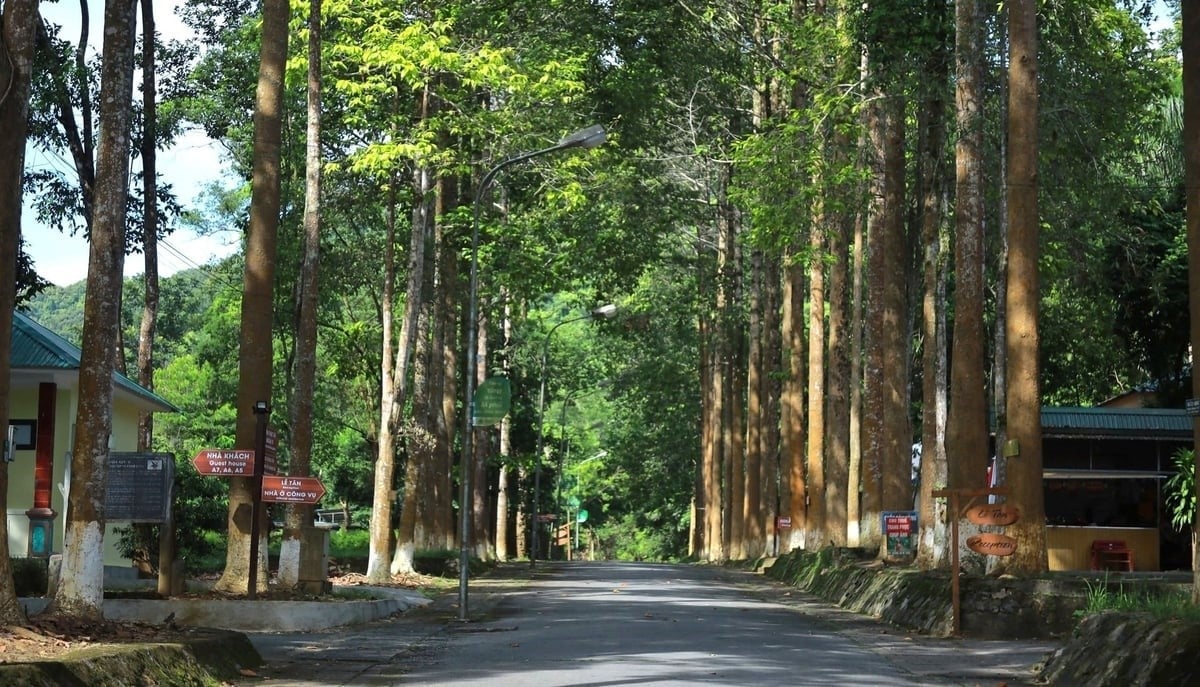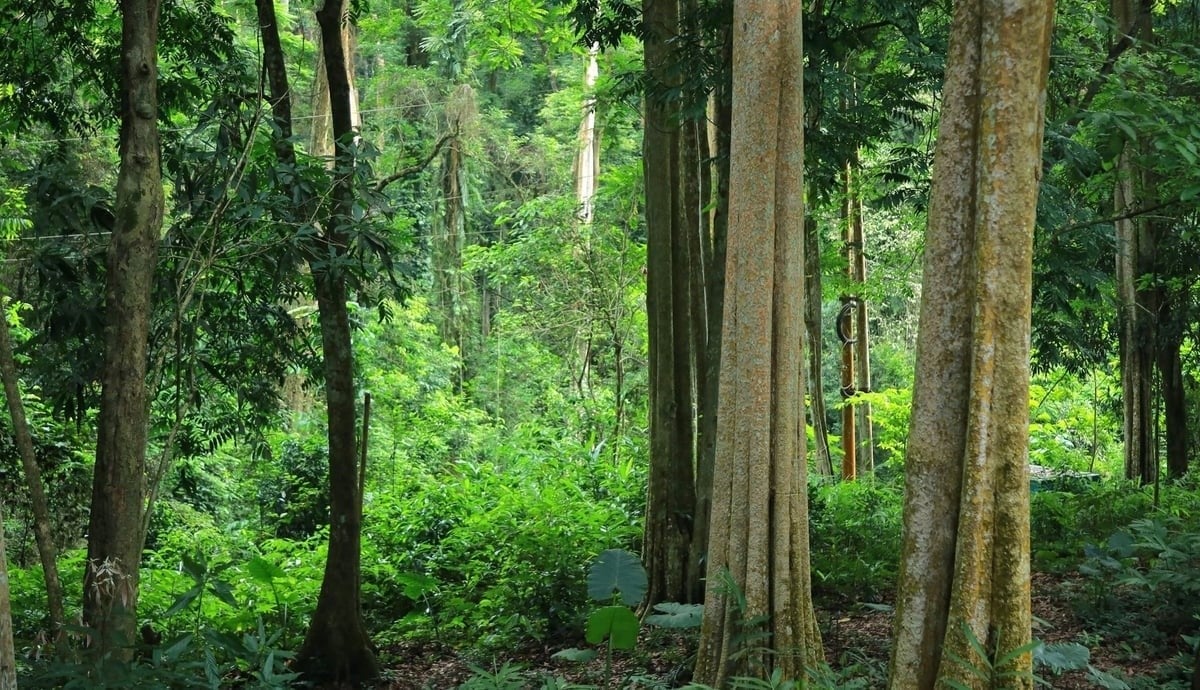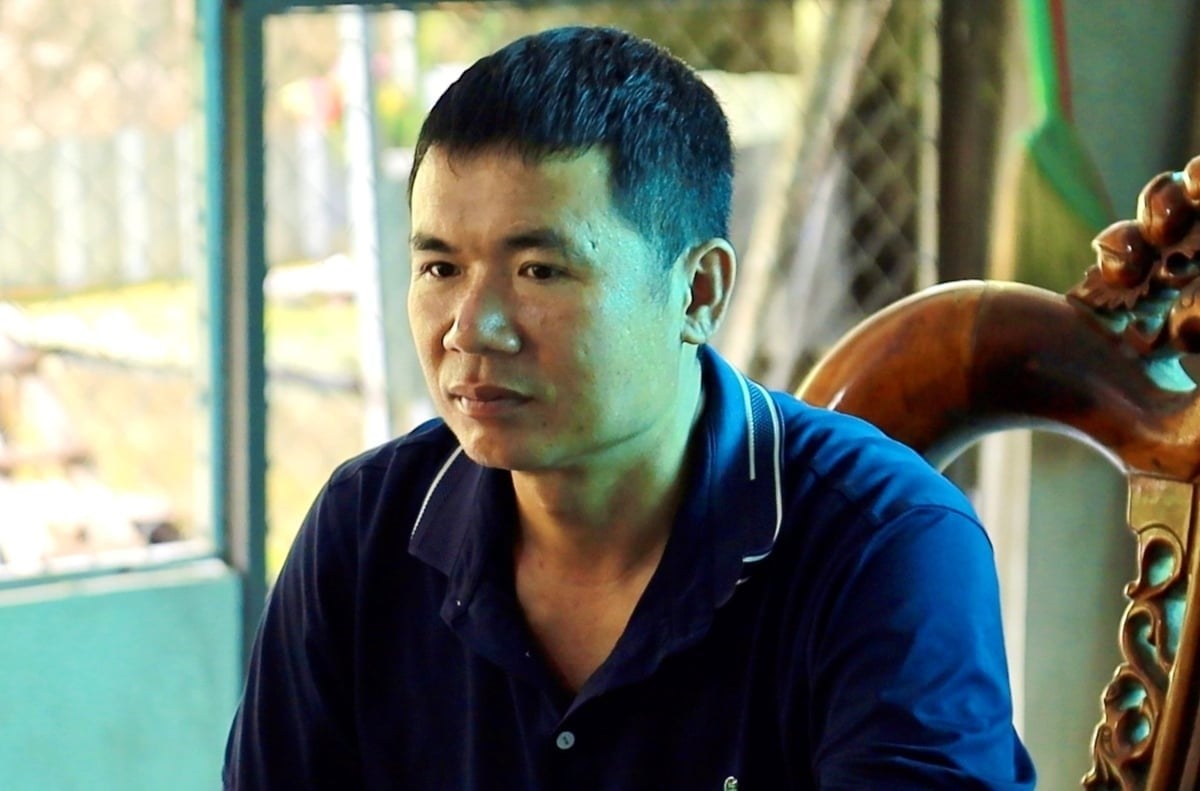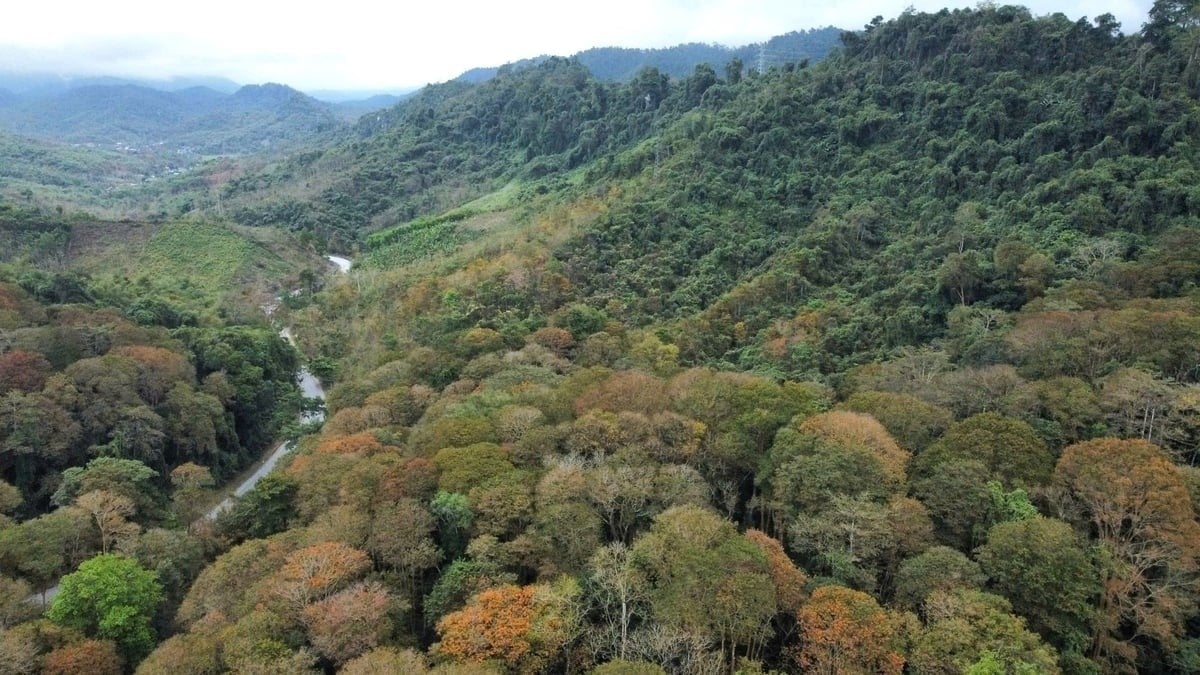November 21, 2025 | 12:32 GMT +7
November 21, 2025 | 12:32 GMT +7
Hotline: 0913.378.918
November 21, 2025 | 12:32 GMT +7
Hotline: 0913.378.918

Possessing a vast forest area enables Nghe An to generate substantial service revenue. Photo: Ngoc Linh.
Nghe An has over 1 million hectares of forest and forestry land. The larger the forest area and the higher the forest cover, the greater the benefits are, as reflected in revenues generated from forestry policies such as forest environmental services, replacement afforestation, and the National Target Program for Socio-Economic Development in Ethnic Minority and Mountainous Areas. In particular, a recent highlight is funding from the Emission Reductions Payment Agreement (ERPA) in the North Central region.
Local governments at all levels and state-run forest owners affirm that, in the context of severely limited management budgets and a critical shortage of technical personnel, major policies like ERPA have significantly eased the burden.
In practice, ERPA has directly resolved many longstanding bottlenecks. The policy has helped reduce deforestation and forest degradation, thereby maintaining and enhancing forest carbon reserves. More importantly, ERPA has contributed to improving the livelihoods of upland communities, particularly community groups involved in forest management and protection. Indeed, aligning responsibility with benefits has created a great turning point.
"Over the past 10 years, forestry policies have spread widely across Nghe An's mountainous areas. Benefiting from allocated funds, local residents have raised their awareness and responsibility in terms of managing and protecting forests, rather than exploiting them for subsistence. Today, illegal logging for commercial purposes has been virtually eliminated, and deforestation and slash-and-burn cultivation are no longer taking place," emphasized Mr. Luong Vinh Phuoc, Deputy Head of the Tuong Duong Forest Protection Station, which manages around 200 hectares of forest.
The positive impact has also extended to the Pu Huong Nature Reserve, which manages more than 45,000 hectares of forest land, with ERPA payments basically covering the entire forest area.
Total revenues from ERPA for Pu Huong Nature Reserve have exceeded VND 11.5 billion. To ensure synchronous and effective implementation, the reserve has organized 20 communication conferences attracting around 2,000 delegations; produced ERPA activity bulletins regularly broadcast on loudspeakers in 34 communities; and conducted training courses for nearly 100 participants, including reserve staff, representatives of commune People's Committees, and management boards of communities engaged in forest protection contracts.

With the burden of livelihood no longer pressing on them, Nghe An’s upland communities can now focus wholeheartedly on forest protection. Photo: Ngoc Linh.
In addition to making direct payments to contracted households, through the ERPA policy, the Pu Huong Nature Reserve has built and upgraded infrastructure and transportation systems at the centers of villages, installed solar-powered lighting systems (each community erecting 23 poles and solar lamps), and constructed shaded pergolas at six community houses.
Mr. Vo Minh Son, Director of the Pu Huong Nature Reserve Management Board, shared, "Revenues from ERPA have provided substantial additional resources for us to implement our tasks and plans. Thanks to ERPA, we have been able to mobilize more forces for forest protection. In the forest areas under our management, contracted households regularly patrol, inspect, and safeguard the forest, enabling us to promptly detect and prevent violations. Since the ERPA policy was introduced, forest protection has improved significantly, with biodiversity value and forest cover continuously increasing."

Mr. Lo Van Tung's family has benefited greatly from the ERPA policy. Photo: Ngoc Linh.
With 30 hectares of forest contracted to him by the State, Mr. Lo Van Tung, a resident of Khi village, Muong Ham commune, earns about VND 15 million per year through the ERPA policy. Born and raised in this rugged upland region, Mr. Tung is well aware of the value that the policy brings.
"Our mountainous communities depend on the forest for our livelihoods. Forests are the precious asset of each community and family here. They preserve the soil and water and help prevent natural disasters and floods. Most importantly, by protecting the forest, we benefit from forestry policies, recently ERPA. This policy helps upland residents ease the constant burden of livelihoods, allowing us to focus more effectively on forest protection."

Nghe An's forests are developing stably, with biodiversity and forest cover continuously increasing. Photo: Ngoc Linh.
As of June 2025, Nghe An's cumulative revenues from the ERPA program had reached over VND 356 billion, with the 2025 disbursement plan accounting for about half of that amount, equivalent to more than VND 178 billion. These funds have been paid to over 30,000 forest owners, including households, individuals, and village communities, the majority of whom are disadvantaged upland residents.
Translated by Thu Huyen

(VAN) Over the past two decades, the unified legal framework for water resource management has been perfected, becoming a crucial foundation for ensuring national water security.

(VAN) The land-data cleansing campaign in Dien Bien is entering its final stretch, yet weak infrastructure, limited personnel and fragmented multi-period datasets continue to create major obstacles.
/2025/11/20/0204-2-115235_496.jpg)
(VAN) Not only do carbon credits bring a great revenue source, but they also contribute to better forest protection and development. However, this potential remains largely untapped.

(VAN) Applying modern technology is helping environmental monitoring and oversight of management quality.

(VAN) Viet Nam’s economic losses could reach 12–14.5% of GDP annually by 2050 if no climate-response measures are implemented.

(VAN) Initial calculations suggest that blue carbon initiatives could reduce CO2 emissions by approximately 3 million tons in Viet Nam by 2035.
/2025/11/19/4020-1-172955_773.jpg)
(VAN) The Emission Reductions Payment Agreement in the North Central Region (ERPA) has generated positive impacts across the highland areas of Nghe An.